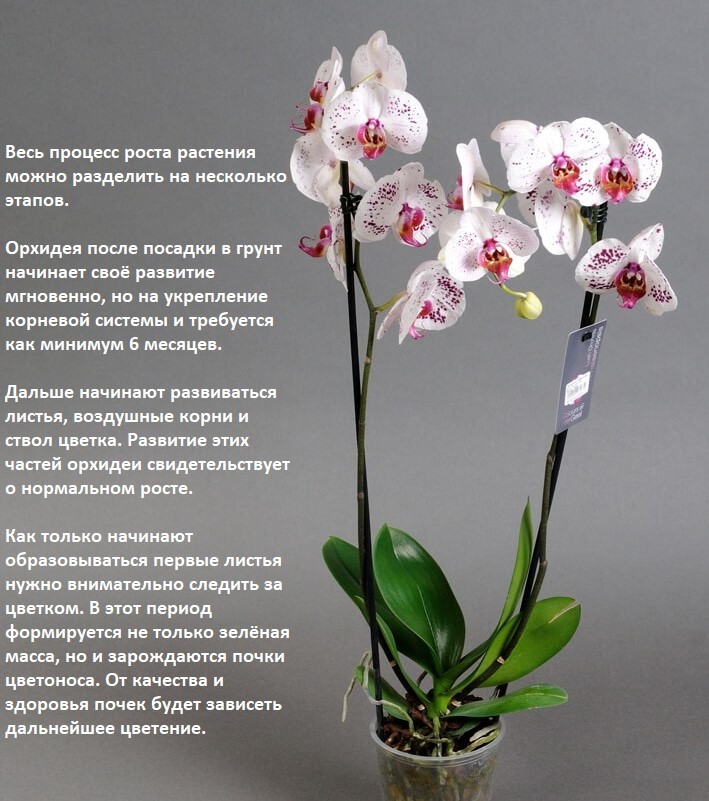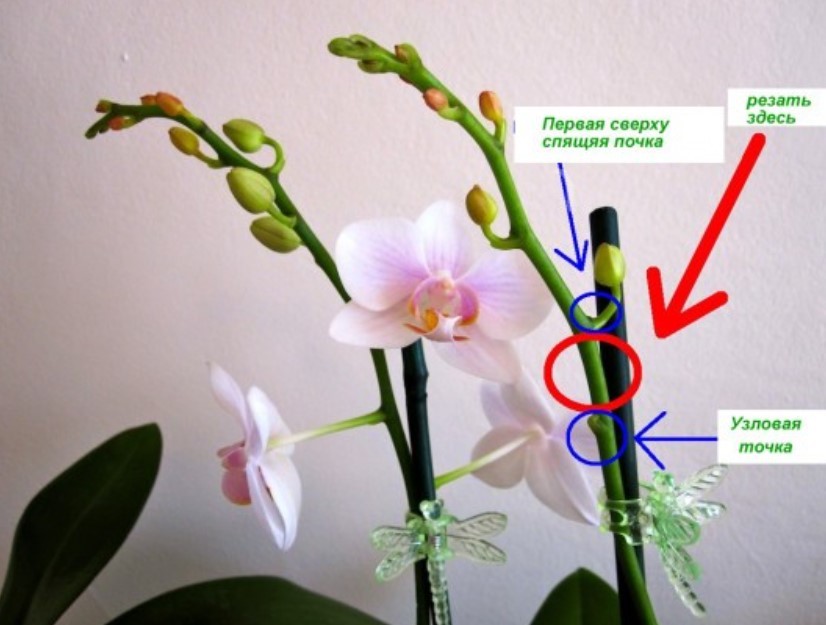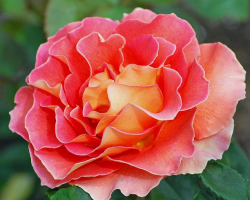A flowering orchid can be admired for an infinitely long time. These unusual for our climatic conditions, representatives of the Flora world throw away such a delicious and delicate color that millions of fans-flower breeders began to grow them on their windowsill.
Content
The orchid turned into a symbol of elegance and good taste, and therefore the Russian housewives are in such a hurry to decorate their home with them. But it happens that you seem to water it, and you fertilize it, but there is still no color from this tropical beauty. Why does this happen? It's all about the whims of this plant. Therefore, you want to admire this variety of colors and shapes - carefully care for them.
How often does an orchid bloom?
- The orchid has its own flowering mode, and it is very different from the phase of other colors. Therefore, you should not draw parallels between them - it is important to understand that they are genetically accustomed to special climatic conditions that exist in the region from where they came to us.
- There are a lot of types of orchids, and each of them has its own regime: active growth, flowering and rest, so it’s impossible to say for sure when the time comes to bloom each of them.
- When purchasing another orchid in a flower store, you need to ask all the nuances from sales consultants. The most common type we have - fallaeneopsis. It is actively growing in the summer, and usually begins to bloom spring - At its beginning or middle.
- Most often the "adult" flower throws out the color once a year, and pleases the eye with its luxurious colors for 2-3 months. Although there are varieties of orchids, where they begin to bloom back in the summer, and the end of flowering occurs in early spring.
- Therefore, it is difficult to say how much orchid blooms at home. Some varieties have a different amplitude in general: they can bloom 2-3 times during the year, and there are those that intensively bloom for six months, and the rest of the time restores. During the flowering of the orchid, they also affect temperature differences, watering frequency and the amount of sun.

You can find out everything about your orchid by following her for a year. Writing about all the changes that will happen to the plant, for the future you will already know what and when to expect from it.
Why is the orchid not blooming?
- Some beginners in the growing orchids are upset if the orchid does not grow and does not bloom. Previously, it is worth finding out all the information about her biorhythm.
- And if something does not coincide in it, then only in this case you need to begin to look for a solution to the problem. If you, for example, only planted a flower, then you can only admire the first colors 2 years later.
- But if a young orchid has already appeared 6 sheets, but she is not going to bloom, here you already need to think what to do if the orchid does not bloom.
- An orchid is only worth getting into the ground, as it immediately begins to develop, but the root system will strengthen within six months. As soon as the roots are well fixed in the pot, the time of the development of leaves, air roots and the barrel of the plant come. This is the norm for the flower.
- Follow the development of the flower very carefully from the time when the first leaves begin to appear, since at the same time The plant is also covered with color -bearing buds. It depends on how high -quality and healthy ones it also depends on how your flower will bloom. At this time, it is important to feed the plant correctly - it should receive sufficient quantities potassium, magnesium, phosphorus, But excess nitrogen can harm him.
- If a year has passed, or even two, and your orchid does not give any signs of flowering, then this already indicates a certain deviation from the normal development of the flower.
What can make the orchid bloom?
- Many flower growers know about 2 effective methods that help orchid to bloom. This can be called "shock therapy" for the flower - the impact on it temperature changes or watering restriction.
- You can "shock" the plant only in the spring, when the night temperature is already at least 16 ° C, And then the pot can be taken out into the yard. In the afternoon, it is best brought into the house, and if you leave in the open air, you need to make sure that the sun does not fall on it. And with the “drought” method, the situation is even easier-just deprive it of watering for 4-5 days.
- Such stress perfectly tolerates the most unpretentious phalaenopsis among orchids. But remember thoroughly: such experiments can only be carried out with a plant rested after the last flowering. It is strictly forbidden to do this with a weak orchid, since such extreme conditions can lead it to death.

How to care for an orchid during flowering?
Flowering time can be called a period special for the orchid. Since these pampered flowers do not tolerate temperature differences, and fertilizers are not all suitable for them in all quantities, you need to carefully monitor that the flower remains to live and delight you with its flowering further. Make sure that all important components fully satisfy the needs of a flowering plant. What needs to be done?
- Fertilize. Fertilizers must be applied during its flowering period, but nitrogen at this time give in much smaller quantities, since it is the first reason for the inhibition of the development of orchid flower buds. To play it safe, select fertilizers rich in feeding on phosphorus and potassium, since they actively participate in the origin of the kidneys, which guarantee the appearance of healthy flowers. It is necessary to feed the plant with fertilizers during its flowering only 1 time per month - if it is done more often, then it can die from an excess of nutrients.
- Water. During the flowering of the orchid, you need to water it somewhat differently. In each of its flower, microscopic seeds arise, which in nature are able to fly apart by tens of kilometers around. In their homeland, the flowering period of orchids usually coincides with season of rainsthat does not allow them to dissipate far. At home, of course, it is impossible to arrange such rains, but you can use a spray gun. It is important to ensure that the water does not spill into the central part of the flowers. Watering a flowering plant is preferably stained with water, right in its very roots. It is enough to water the plant only a few times a week, but you do not need to fill it very much. In winter, this must be done once every two weeks. Experienced flower growers have already developed a skill - they control the condition of the soil, which should be neither dry, but not wet - everything should be in moderation.
- Moisten the air. In addition to watering, be sure to moisturize the air near the flowering plant with a spray gun and put water next to it in some kind of container. Water needs to be updated from time to time. In winter, flowering orchids should not be watered, as she may be cold.

- Maintain temperature. During his flowering, the orchid loves heat very much. Therefore, make sure that your plant does not “freeze”, if necessary, turn it on it, since the windowsill cools in the winter season, and with it roots. And although it seems amazing to us, the orchid begins to bloom violently in the winter. So do not spare the warmth for your orchid, and it will thank you with its beautiful flowers that will bloom all winter.
In winter, put the foam on the windowsill, which is an excellent heat insulator, and put an orchid on top of it - then it will not be overcool.
- Provide the plant with light. A pot with a photophilous flowering orchid should be placed in a place where natural light comes. The windows are best suited for this. But in winter, when the orchid blooms the most violently, natural light becomes not enough for her. By the appearance of the flower, it can be determined that it receives not enough light - his leaves become dull and elongated.
- Therefore, in October, install additional lighting for the plant, for this you can use conventional fluorescent lamps. But in the summer, you should not keep orchids on the south side, since direct sunlight can burn the leaves of this delicate plant.
Transplanting flowering orchid: Rules
- There are times when you need to urgently transplant a flowering orchid - for example, the plant has grown a pot, poor soil should be replaced, etc. Of course, it is undesirable to transplant it during this period, it is better to wait for the end of flowering.
- But if the matter does not tolerate reflections, then the transplant should be done with maximum caution. Trying not to injure the plant, remove it from the pot, clean its roots from old soil and roots that have already rotted.
- For this manipulation, use scissors with rounded ends. Take a larger -diameter vazon than the previous one, put the bottom with a substrate, place the orchid, and sprinkle with soil on top. You should turn out so that the substrate is covered with all the voids between the roots.
- No need to fill the pot to the top with soil, it is better to make the sides perform - it is easier to water the plant. Having done all these manipulations, pour the soil, and put the orchid somewhere in the shade for the day to get used to new conditions.
Cutting the orchid after flowering
- As soon as the flowers of orchids fade, they must be carefully trimmed, because if this is not done on time, the subsequent flowers are crushed. For this manipulation, take sekator, and with its help, cut off the already faded peduncles a little higher (5-6 mm) of the kidney preparing for flowering.
- The peduncle is usually tied only if it is so bend that it begins to hang below the flowerpot. To stick a supporting stick into the ground must be very carefully so that the roots of the orchids are not damaged, which are weaving along the inner walls of the pot.

The orchid should have its own permanent place. It is recommended to carefully consider it before purchasing an orchid in which place it is best to place it. Since these flowers are difficult to adapt during the change of the situation, they should not be rearranged from place to place, this can harm them.
Correctly caring for an orchid during her flowering, you will extend her life and will admire her beautiful flowers for a long time.
We will also tell:
- Yukka Garden: transplant, care, reproduction
- Indoor cypress in a pot
- Shefler Flower - Care at home
- Lilies have bloomed - what to do next
- Clematis flower: landing, transplanting to another place, growing







